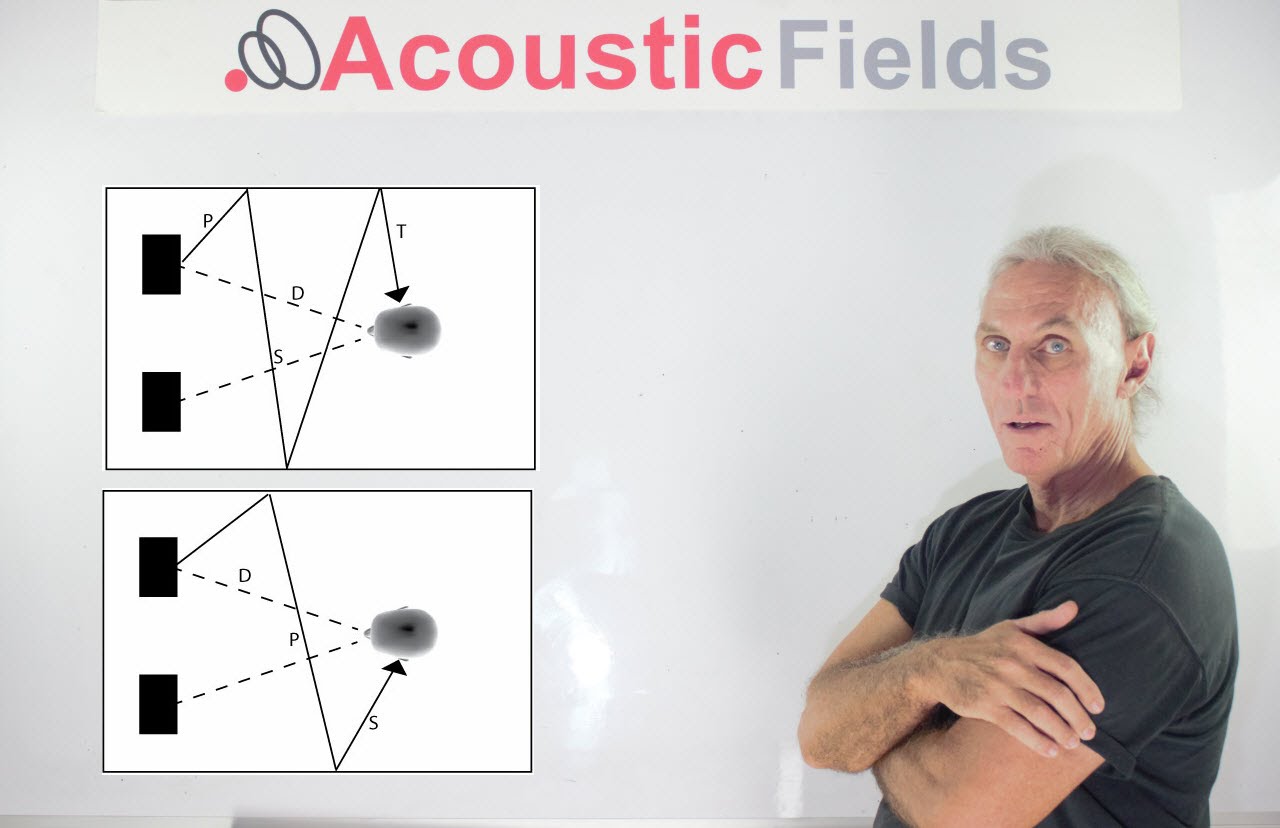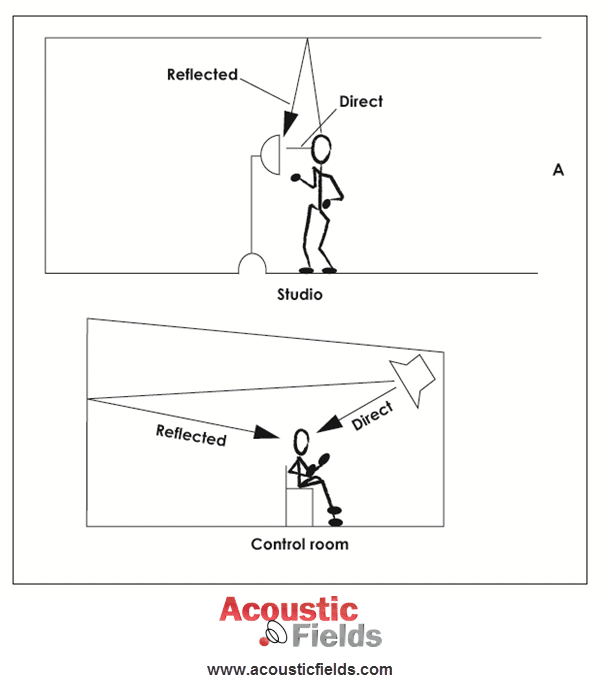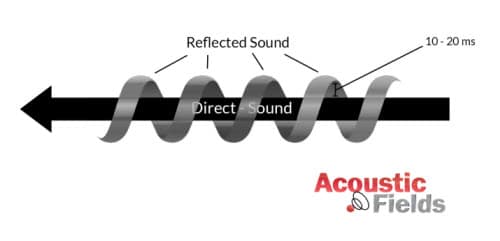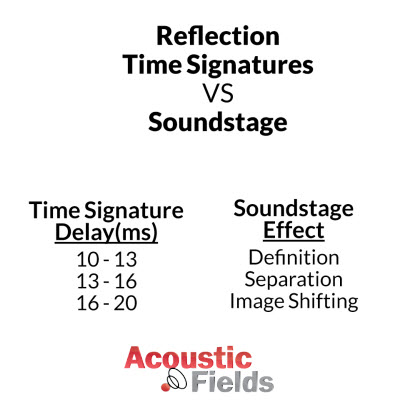Today we’re going to talk about sidewall reflections because this is a really big element in our presentation, especially in our two channel environment whether its in a control room, a personal listening environment or even a home theater. You have to think about good sound and what really is good sound?
Well we hear this word tossed around quite a lot of times, “oh that sounds good, oh that’s good sound”. Well lets try to break that apart into its individual parts and see what we’ve got.
Good sound – what is it?
Its a blend of direct vs reflected energy. So the straight line energy from your loud speakers, that’s direct sound. The reflected sound is the energy from the room, the sidewalls, the rear wall, the front wall, the floor and the ceiling. All of those surfaces contribute something to the good sound.
So good sound is a blend of direct vs reflected energy.
Our soundstage is the area between our speakers, hopefully extends past our speakers and our speakers dissappear when we close our eyes and we have this soundstage in front of us. On the sound stage we have a strong center image so all our vocals and everything are right in the middle, between the speakers where they are. We have a wide soundstage that extends past the speakers and we have an instrument and a vocal separation so we can hear everything, that’s the goal.
So when we have good sound, we want to be able to hear everything with good separation on our soundstage and our soundstage is created by our blend of direct abd reflected energy.
Sidewall reflection breakdown.
Where do the reflections occur? Well they’re sidewall reflections when they occur in the horizontal or laterral domain. So what is the big thing with reflections? What impact does it have on our good sound and what impact does it have on all the elements we listed above for good sound namely, image focus, definition, separation and all those good things?
Well the time variance between the delayed reflection and the direct sound, that’s directly responsible for the image focus and in the graphic further down the page you’ll see how just a little 1 or 2 mili second delay has a big impact on what you’re actually hearing. So the rate and level of absorption that you use for treatment has to be consistent with these time elements that we look at.
We have a 10ms to a 20ms window between the reflection and the direct energy that we have to be concerned about. So we have this really narrow band of time delayed energy that mixes with our direct sound from the loud speaker, that has all the above mentioned information in it. So you have to be very careful with it. You have to manage it correctly.
How do manage sidewall reflections correctly?
We look at our 10ms to 20ms delay window and we want to make sure that we stay within that range for our time signatures on our reflections.
So reflected energy contains a lot of information and we have to manage it correctly. So in the below graphic you see that there’s a big impact on reflected energy over direct and it kind of wraps around the direct… I don’t know if that’s an accurate way to describe it but I think it gives you an idea of the impact it has on the direct signal.
The following graphic you can see that the 10 to 13ms range we have impact on definition. We see that with the 13ms to 16ms range we have an impact on separation and then in the 16ms to 20ms range we have an impact on image shifting.
So you see there’s a lot of things going on in that 10ms range that you have to get right. So if you’re having difficulty getting your center image to focus correctly and getting it defined and it getting your sound stage to be large enough, you have to deal with sidewall reflections and the time signature on those.
In Summary
So I hope that helps you. If you would like to learn more about room acoustics please sign up for my free videos and ebook by joining the mailing list here. I send room tuning tips and things for you to test in your room every Wednesday. They are easy to follow and really help you enjoy more of your music. And if you would like your room acoustic issues analysed for free by me then please fill in the form here and I will be happy to take a look for you.
Thanks and speak soon
Dennis










